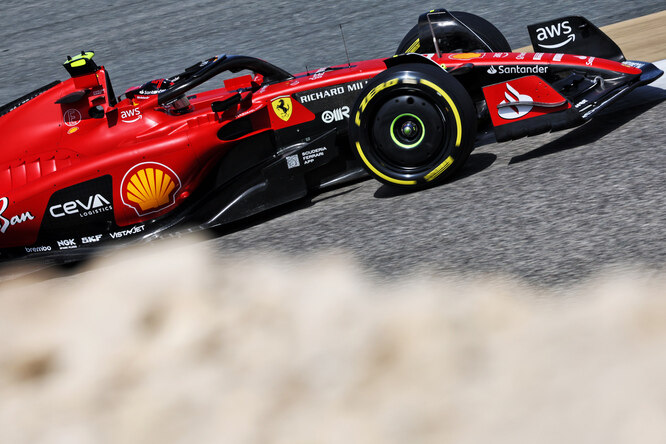Ferrari-Red Bull, the 2023 F1 World Championship is not yet written
It was inevitable and not even unpleasant (impressive health reasons oblige me to go to the Imola bars at least once a week) to expose myself to a barrage of questions from friends and enthusiasts. And yes, on the eve of the first Grand Prix in Bahrain, we have to say that everyone’s impressions reflect reality. Net of the usual variables, Red Bull is clearly the stronger car right now. The usual talks about the quantity of petrol and the tires are valid: in long-runs nothing is hidden, because the driver needs to ‘feel’ the new single-seater; in the fast laps you can do a little pre-tactical, but in the end you put very little fuel and the super-soft compounds, on a ‘traction’ track like Sakhir, didn’t give a real advantage due to excessive degradation. So the C4 is better than the C5.
Potential issue
But then, you will say, should we resign ourselves to a world championship with a script already written, like the TV series? I say no. Because there is the possibility, and not even a theoretical one, that the roles have reversed compared to a year ago. And therefore that the RBR is the project, so to speak, more mature and therefore immediately competitive but with less room for growth. While the Ferrari SF-23, unlike last year, still starts off green but with more potential. Excuse me, acclaimed adversaries and unrealistic outsiders, but the other figures on the horizon seem more secluded.
SF-23, rear tire problems
Doubts and criticism rained down on Ferrari on the first day of testing, when the camera-car and exterior images showed Leclerc’s obvious difficulty in driving a car that was too stiff and had difficulty over bumps. Personally, I always have the nightmare of 2018 in my head, when Seb Vettel already realized during the filming day that the steering wheel suddenly lightened and it was later seen that it wasn’t a problem with power steering, but with aerodynamics. But it’s also true that on the first day, at least in Ferrari, the settings don’t touch each other, so as not to introduce too many variables into the equation. It may be that the ‘baseline’, the setup defined on the simulator, wasn’t entirely correct, but the pilot had to grit his teeth and the situation improved over the three days. If anything, there is a problem with the new rear tyres, artfully criticized by Sergio Perez but used to the fullest by Red Bull, while the others all struggled a bit with the rear.
The work on the wing
It amazes me that little attention has apparently been paid to the experiments on the SF-23’s nose wing. Towards the end of the first day, four tie rods appeared connecting the tip of the ailerons to the nose. Hardly that it was a fallback solution. Rather a planned comparison test. What do tie rods do? They pull. And therefore they ‘immobilise’ the wing surfaces, which in normal conditions are instead subject to natural deformation, especially downwards. What if the purpose of the test was precisely to verify the aerodynamic behavior of the rigid wing compared to the ‘folding’ one? Hypothesis supported by subsequent images that show David Sanchez, aero manager, talking to Andrea, the ‘coachbuilder’, showing him the overlapping flaps on the left side, as if a sort of sliding between the surfaces was missing. Maybe (and I just say maybe) we are working on the ‘outwash‘, to the flow that opens already crossing the front part of the machine, where the five ‘separators’ stand out whose task is to keep the ‘light’ constant, i.e. the space, between the two upper flaps, but which this year will not are more bound by the regulation to mere structural functions. In fact we saw a very fast Ferrari on the straight: was it all due to the breezy extra power of the engine? Let us remember that developments on the Power Unit aim at constancy, not at performance growth…
Red Bull, a less extreme approach
On the other front, Red Bull seemed less active in what is a classic of pre-season tests, namely the use of ‘rakes’. Those grids from which dozens of mini-Pitot tubes oriented in the direction of travel emerge to understand the aerodynamic behavior of the single-seater. These are expensive tests, also from a monetary point of view: perhaps Adrian Newey gave up on them in part, faced with the penalty for exceeding the budget cap which is added to the limitation of tunnel hours. Perhaps Red Bull has chosen, for many reasons, a less extreme approach than others. That would change the performance curve over the course of the season. In the meantime, let’s see what happens this weekend. Maybe not in the race, but in qualifying we could see something interesting.
